Angela Petch's Blog
September 8, 2025
History with mystery …
The Lost Garden, out on September 11th, is a little different from my other World War Two historical fiction novels. I’d describe it as history with mystery and a lacing of supernatural.

The principal setting is based on a town near to me, over the border from Tuscany and into Romagna, half an hour’s car drive from where I live each summer. Perched above the town of Sant’Agata Feltria is the most exquisite ancient castle, dating from the thirteenth century, presenting itself as the perfect illustration for a children’s fairy tale. In fact my son-in-law, who is great at drawing, keeps urging me to write a story so he can illustrate it. Instead, I have imagined another Second World War situation. And stretched the truth to an extent, because the local tourist office has been unable to furnish me with history of that time. The castle is set a little way back from the valley that saw so much fighting near the Gothic Line and although it commands a superior position, as far as I can find out, it never was used as a defensive position. If you visit the castle of Sant’Agata Feltria today, (renamed in The Lost Garden as Sant’Agnese), you will wander around a building that has been turned into an exhibition of fairy tales. So, I invented my own history.


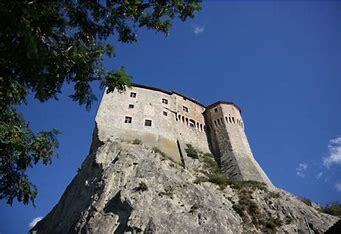



All wars are tragic. Small wonder people cling to their religious beliefs and superstitions and need to hold on to the thought of an afterlife: to give reason and hope to their own lives. I have never experienced any ghostly apparitions but I know friends who have and my own very down-to-earth mother was very aware of an evil presence in her first home immediately after the war. She didn’t tell my father as she felt foolish but when he was away for work, she moved out of the double room and slept on the floor next to my brother’s cot as she felt so ill at ease in their double room. My father in the meantime had been told in his local pub about a grisly murder committed in that very room, the body only discovered a while later, wrapped in a carpet. He didn’t tell my mother until they had moved from their cottage.
The spirit in The Lost Garden is not evil. Fiammetta is a restless benevolent being, concerned to ensure her daughter, Tina, lives a fulfilled life. While I wrote, I hoped readers would not think I was potty. Make of her what you will… but I absolutely needed her in my story.
Reviews so far have thankfully been favourable and I am so grateful.
“The story has supernatural elements which enhance the intrigue and mystery.”
“A new book from Angela Petch is always a treat, and this one is no exception. For the first time she dabbles in the ghostly, which adds an extra dimension to the story.”
“… it was a pleasure to be in Angela’s story, the world she created for us within her story was spellbinding and beautiful…”
“The Lost Garden is a novel that sneaks up on you. It doesn’t shout. It doesn’t rush. But it gets under your skin. It has a ghostly beauty to it—a quiet whisper of the past, a touch of the otherworldly, and a whole lot of heart.”
Whoever you are, you reviewers, thank you so much. xxx baci, as we say in Italian.
A line in one review stood out for me: “This is almost a fairy tale except that WWII is out there.”
Yes, indeed! I have included details which took place very close to the castle, just along the valley from Sant’Agata Feltria. The massacre that I describe in Sant’Agnese is based on the dreadful massacre at Fragheto. I have skewered facts into my own story but there were too many outrageous atrocities committed in our area of eastern Tuscany.
A local museum in the village of Casteldelci, near Sant’Agata, features this massacre and it makes for a sobering visit. I was drawn to tears.


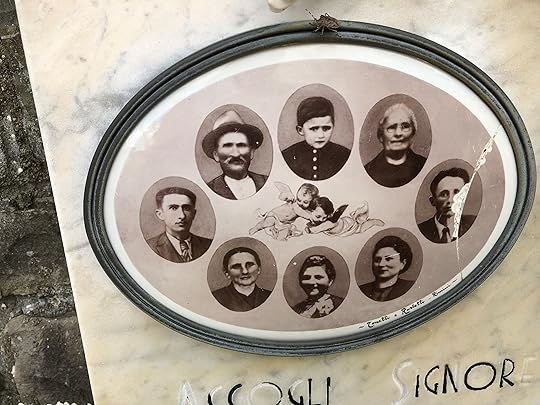
The phrase in the middle caption translates: “We are the memory that we own and the responsibility that we assume”. In simple words, we should #neverforget
The Fragheto massacre was the massacre of 30 Italian civilians and 15 partisans in Fragheto, on 7th April 1944, by soldiers of the German 356th Infantry Division. After partisans belonging to the Eighth Garibaldi Brigade ambushed troops approaching the hamlet, fourteen soldiers of the Sturm-battaillon OB Sudwest conducted house-to-house searches and summarily killed civilians. Many of the victims were elderly people, women, or children. A further seven partisans and one civilian were shot the next day at Ponte Carrattoni, spanning the Marecchia river, now known as the bridge of the eight martyrs. I have referenced the bridge in The Lost Garden. But of course the names in my book are not those on the photo above: the oldest victim, 78, the youngest 40 days old. What harm could they possibly have done? Man can be so cruel.
So, although I have invented a story, it is influenced by fact and politics of the time. We should never forget the sufferings of ordinary people but we never seem to learn about war, do we? Witness today…
Some Netgalley reviewers have the same views: “This is a story of suffering and loss, but also of strength and determination. An excellent read, and a stark warning for our own times.”
“A beautiful story of devastation, heartbreak and love even though at times very confronting and sad.”
“What elevates The Lost Garden is its emotional intelligence. Petch doesn’t just show us what war does to a country—she shows us what it does to families, to friendships, to memory. She’s not afraid to let things unfold gently, giving the reader time to sit with each choice, each consequence. And that patience pays off. When the emotional hits land, they land hard. I found myself unexpectedly teary more than once, not because of some dramatic reveal, but because of a quiet line or a simple act of love in the middle of chaos.”
I am overwhelmed by the reactions so far and I hope my book will please new readers too.
June 2, 2025
The secrets of Sicily…
I do love a story set in Sicily where I worked for a couple of years back in the 1970s. Eek! Where has time gone? I met my lovely husband there, so it holds a special place in my heart, so I was delighted to come across lovely Jan Bayham and her book published back in 2023. The Secret Sister really captured my attention. I asked Jan about her research and she also offered really useful writing tips.

A big thank you to you, Angela, for inviting me onto your lovely blog as part of your series on Writing Tips. I’ve always enjoyed reading novels set in the past, especially if I’m also transported to a different location from the one I’m familiar with. It came as no surprise to me that when I began writing historical fiction, I also wanted to transport my own readers to differing locations. That meant one thing, research. Not only did I need to research the time in which the stories were set and avoid anachronisms, I also needed to walk in my characters’ footsteps when they visit a new country for the first time, sample what they eat and drink, smell and hear what they do.
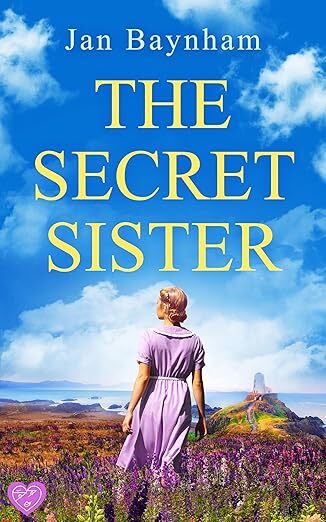
My fourth novel, The Secret Sister, is set in rural mid-Wales where Carlo Rosso, an Italian POW, is interned. As an artist before the war, he is given the task of transforming a dilapidated Nissen hut into a beautiful chapel in which his fellow prisoners can worship. There was no money for materials. I researched making coloured dyes from boiling fruits and berries, onions-skins and tea leaves. I also travelled to west Wales to visit the Henllan Bridge Prisoner of War camp, that had been home to 1,200 Italians. Although I’d read about the Catholic chapel there, nothing prepared me for the beauty and feel of it, and seeing the ingenuity of the POWS by making such a special place from found and scrap materials.

I came away with ideas about the role Carlo played in creating a similar chapel for his fellow prisoners in my novel. On one of its open days, I made a visit to Hut 9, a preserved POW camp near Bridgend to experience what prison life may have been like for him.
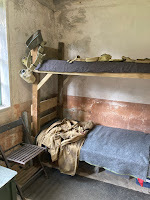
However, the highlight of my research was a visit to Sicily itself, armed with a list of planned visits and questions to ask that had arisen when writing the novel’s first draft. We booked the help of a well-respected WWII guide, asking him to concentrate on the Cathedral, the Allied landings in 1943 and the underground tunnels that were used as bomb shelters at that time. In my novel, while Carlo was interned in a POW Camp in Wales, his mother used the tunnels to keep herself safe from the bombings from the Allied forces and US Airforce. The bonus was to hear from the guide personal anecdotes and stories that you don’t get from history textbooks. In my story, something is hidden away for safety and I found just the place deep underground in one of the tunnels! On another day, visiting the beautiful Casa Cuseni provided inspiration for Villa Cristina in the novel.
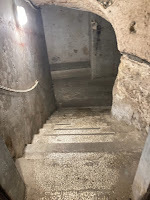

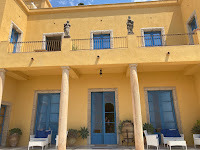
My writing tip regarding research for a novel is to experience as much as you can yourself. Put yourself in the characters’ shoes, walk where they walk, imagine their feelings and ask for personal stories from the time in which your story is set.
I couldn’t agree more, Jan. If we are fortunate enough to be able to research in situ, it gives us greater depth to our writing. If we know our story locations personally, then we should be able to draw our readers more easily into the story. Thank you so much for coming to talk to me and I look forward to reading more of your wonderful #historicalnovels. p.s. Have you read the wonderful story about a similar chapel on the Island of Orkney?
My review for The Secret Sister is posted further below.
Blurb for The Secret Sister
Wales, 1943.
Sara Lewis should be heartbroken when her husband doesn’t return from war. But he was never the kind husband she hoped for. Maybe this could be the new beginning she’s always wanted. She and her young son move from her husband’s farm to live with her sister.
Despite herself, she begins to notice handsome Carlo. An Italian prisoner of war in Wales, he has been volunteered to work in her brother-in-law’s builders’ yard. Longing looks soon turn into love letters and a connection neither of them can sever. But fraternization between the prisoners and local women is strictly forbidden. As their love grows, so does the danger all around them . . .
Twenty-five years later, their daughter holds her father’s hand as he takes his last breath and whispers a name: Giulietta. But who is Giulietta, and who are the young woman and baby in an old photograph?
The secrets of the past collide as the family is shaken to its very core, forced to revisit memories they’d rather forget to uncover the truth.
Perfect for fans of Fiona Valpy, Barbara Davis, Karen Swan, Amanda Weinburg or Anita Chapman.
About the author
Fascinated by family secrets and ‘skeletons lurking in cupboards’, Jan’s dual narrative, dual timeline novels explore how decisions and actions made by family members from one generation impact on the lives of the next. Her first three novels look at the bond between mothers and daughters as well as forbidden love. Setting and a sense of place plays an important part in all Jan’s stories and as well as her native mid-Wales, there is always a contrasting location – Greece, Sicily and northern France. Her next three books will involve secrets and sibling relationships; the first, The Secret Sister, set in 1943 and 1968 takes the reader back to beautiful Sicily where two sisters work together to prove their father’s innocence of a wrongdoing. The Silent Sister will be published on August 7th. Partially set in Kefalonia at the time of the devastating earthquake, it involves a young girl who is pulled from the rubble where her parents and grandparents have perished. The third ‘sister’ book, The Stolen Sister, is partially set in Crete and will be published in early 2026.
Originally from mid-Wales, Jan lives in Cardiff with her husband.
My review:
Mystery and Romance in Sicily
I enjoyed this dual time mystery story laced with romance and the way the author decided to relate the story in the past in the first half of the book. Sometimes when the story jumps back and forth, it is easy to lose the thread. But not with The Secret Sister.
I’ve also looked into accounts of Italian POWS working as co-operators for the British during the war and really enjoyed this part in particular: how prisoners “were not allowed to fraternise with the locals”. When you have young people who fall in love, this is difficult and I have met Italian POWs here in Italy who have told me about their British affairs – including one who asked me not to tell his (Italian) wife…
These prisoners were kept on long after Italy signed the Armistice to join the allies, so they were unable to join their loved ones back home for a long time. Small wonder that love blossomed for some. Italians are so artistic and the creation of the little cappella for worship, the ways they found to make candlesticks out of tins and paint with whatever they could get hold of, was not only a crucial part of the story, but testament to the ingenuity of these prisoners of war.
I enjoyed the hints in the first half which suggested that Carlo might have more of a story to him back in Sicily that he needed to hide. I think the cliff-hangers are excellent and made me want to read on to find out what might have happened. “But then, without warning, another beautiful face with ebony hair…” entered his mind… and “there was one reason he hadn’t shared with anyone that meant he could not set foot on Sicilian soil again…”
The intrigue kept me turning the pages so that I was ready for a mystery to be solved in the second half. What it was and if it was solved, you will have to find out for yourselves, but there is a good balance of romance in the “modern” sixties timeline and I enjoyed being transported back to Sicily, where I used to work in the 1970s. This beautiful island is brought to life with clever brush strokes on the pages, with its stunning coastline, busy piazze and delicious dishes.
It’s a feel-good read with depth and I enjoyed the way the mystery was solved. Congratulations to Jan Baynham!
To find out more about Jan, she may be contacted on:
X/Twitter – @JanBaynham https://twitter.com/JanBaynham
Facebook – Jan Baynham Writer https://www.facebook.com/JanBayLit
Instagram – janbaynham https://www.instagram.com/janbaynham/?hl=en-gb
BlueSky – Jan Baynham https://bsky.app/profile/did:plc:jgoaog2fy7svcmuoz3r2zqk3
Blog – https://janbaynham.blogspot.com
Buying Link
The Secret Sister – https://www.amazon.co.uk/Secret-Sister-breathtaking-family-sixties-ebook/dp/B0CD86JDLF/
Amazon UK: https://www.amazon.co.uk/stores/Jan-Baynham/author/B085DC6BKR?
Amazon US: https://www.amazon.com/stores/Jan-Baynham/author/B085DC6BKR?
May 7, 2025
VE day, eighty years on #neverforget
Eighty years ago, on May 8th 1945, the formal acceptance of Germany’s unconditional surrender in WW2 brought an end to the war in Europe.
There will be plenty of posts today about this special occasion. And there were many dignified celebrations over the weekend. I’m keeping my post brief.
We must remember the many sacrifices made and be vigilant and pray that, in these unsettled times, such a war does not occur again.
Sacrifices were made by not only our brave service men and women but by ordinary people.

I remember particularly my cousin Billy, a rear gunner in the RAF, barely twenty years old, shot down and killed over Yugoslavia. My own father was in Africa and Italy, amongst other places… he never talked much about his war – most people didn’t. I know he was torpedoed and ended up in hospital. My own mother did not see him for many months and turned grey in the meantime. They married young during the war: her dress was made from parachute silk and ration coupons were exchanged with neighbours and friends for making the cake and buying shoes.
My Italian mother-in-law met her British army captain when she was eighteen in occupied Italy and came to England where she spent her married life, having to learn a totally new culture. What upheaval. What love.

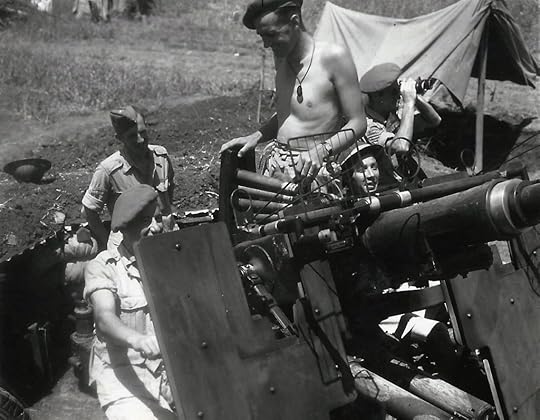
Captain Horace Petch (shirtless) and his men on the Italian campaign
So, I remember the ordinary folk today. In extraordinary times. And I shall not forget. Thank you for all the sacrifices you made for us. I have tried my best to represent you in all my historical novels.
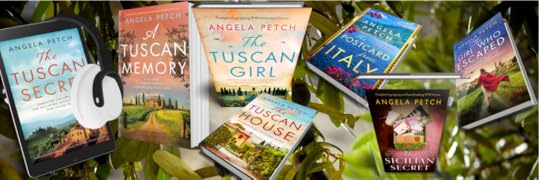
#neverforget #ww2 #weshallrememberthem #family
May 4, 2025
A writing day for Jane Cable aka Eva Glyn, plus tips…

Jane finds a place to write wherever she is – this spot at a Spanish writing retreat in Andalucia
Over to Jane:
My writing day depends hugely on where I am in the process of writing a book, but it always starts the same way; creeping out of bed, leaving my husband fast asleep, and heading downstairs to make a strong latte. While it’s brewing, I open the back door to let in some fresh air, and at this time of year, birdsong.
Do you have any tips to share, Jane?
Tip 1: Having a set routine works for me. I don’t buy waiting for the muse to strike – the only way for me to get a book finished is to sit down and put one word after the other into my document.
If I am writing fresh words I will do just that until my husband wakes up and we have a cup of coffee together. It’s easy as a writer to get lost in the world you’re creating, but it’s so important to make time for those we hold dearest too.
While writing a contracted book I load a detailed scene by scene plan into my writing software before I start and follow it, aiming for around 1,500 words a day. Of course my characters sometimes take me off piste, but I’m mindful that my publisher has acquired a particular book – although I have to say they are very understanding when things turn out rather differently to how we planned.
At the moment I am lucky to have time between contracts so I am working on a passion project and letting it grow organically on the page. Of course I have an outline scribbled in my notebook but I am letting my characters fumble their way from A to B to C as they grow, and it’s just the most wonderful feeling.

(Thanks to Engin Akyurt for photo)
Tip 2: If you feel you might be getting stale, don’t be scared to try a different way of writing.
Once I have completed my word count I deal with everything that surrounds the business of writing; social media, making marketing graphics, even doing my VAT return. But I am also conscious of not spending all my time at my desk. We live in Cornwall so have wonderful walking on our doorstep, and I make sure I spend time outdoors every day. It’s also important to socialise with both writing and non-writing friends, either via technology, or even better, face to face.

Myself and Jane in Andalucia between writing stints. It’s good to share thoughts and bounce ideas in the fresh air
Tip 3: So much inspiration comes from the real world, don’t cut yourself off from it.
If I’m at the editing stage – or should I say stages – of a book, my day looks quite different. This is the most intense part of the process for me, when I tend to be glued to my desk for far longer, even though I still start at an early hour with latte in hand.
Before I submit a book to my publisher I like to spend at least as long editing it as it took to write. I have a very definite process, attacking one aspect of the story at a time, be it character development, timeline, descriptions etc. I don’t think I could ever just read a manuscript through again and again, with no clear purpose as to what I’m trying to achieve – I’d just go around in circles.
Tip 4: Draw up an editing check list and develop it over time, alongside your writing.
Eva Glyn’s new book, The Santorini Writing Retreat, is woven around writing a novel, and has a few more useful tips scattered throughout the story. It’s out on 22nd May: https://mybook.to/SantoriniRetreat
Follow Eva on Facebook at : https://www.facebook.com/EvaGlynAuthor, and on Instagram here:https://www.instagram.com/evaglynauthor/
Thanks so much Eva/Jane. These are invaluable tips and I am a fan of your books: each one better than the last. I was lucky to read an advanced copy of your latest, as you know and below is my 5-star review:
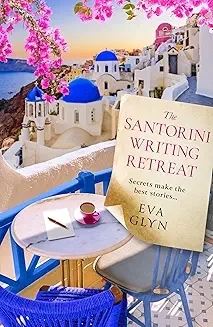
The most important things: friendship, honesty, courage and laughter
What a clever, complex story. A group of aspiring writers is gathered together on a writing retreat that will last A WHOLE MONTH on a beautiful Greek island, surrounded by olive and pistachio groves. How mouth watering!
Add to this wonderful setting (which the author describes so enticingly): secrets and lies waiting to be discovered, relationships that aren’t quite working, “tragedies and small triumphs, excitement and uncertainty…” and we have a true page turner. There’s a whole month in which to learn about the complex lives and tangles of these characters and become immersed in rural Santorini. Instead of Chapter 1, Chapter 2 etc, Eva Glyn heads each section with the day’s date. Clever. It helps the reader live side by side with events.
The three main characters – although all members of the retreat are portrayed as complete characters (including Sybil the dog!), are the tutor, Jo, whose writing pseudonym is Jessica Rose, the owner of the boutique retreat accommodation, Zina, and Karmela – my favourite character. These three women form a deep friendship throughout the course of the month and help each other come to terms with their various problems.
It’s a multi-layered story, deep but not heavy, tackling serious issues that many will identify with. I loved it. I have said it before, but Eva Glyn’s writing is assured and with each book, she gets better and better.
No hesitation in awarding five stars. Thank you to One More Chapter for letting me read an early copy.
April 27, 2025
Jessie Cahalin’s writing routine …
I so admire indie authors. It’s hard publishing independently. You have to be the creative director of your own books, whereas if an author is with a publisher, the editing, producing, distributing and marketing is taken care of. Jessie Cahalin is a kind, generous and hardworking lady, supporting so many authors, especially in her time as blogger of the now extinct Books in your Handbag, where she interviewed scores of authors new and established, young and old.

I may be a little biased but Jessie was my first reviewer and and blogger ever. I was a fairly new indie author and in 2017 had recently self-published my second #histfic, set in Italy. It was called Now and Then in Tuscany at that time, but is now published by Bookouture and the title is A Tuscan Memory
Honestly, it meant the world to me when I read her encouraging words. She had understood what I wanted to convey. Her one review was sufficient to me. Thank you so much, Jessie. 
We met in 2019 at the RNA conference in Leeds and I wish we’d been filmed: two women running towards each other, arms outstretched to end in a hug of friendship.

Our first meeting
Anyway, it is my turn today to support Jessie and I do so from the heart. Over to Jessie Cahalin, who published A Gift for Maisie Bloom on March 4th 2025

She’s busy with a sequel and I asked her about her writing process.
I am writing the first draft of a romantic cosy mystery which involved a lot of planning, but the characters have other plans. A Surprise for Bethan Lovejoy (working title) is the second book in a series set in Yorkshire, and it is proving rather tricky. This is how my writing day looks at the moment…
After twenty minutes of catchup on social media and book promotions, I write from 9am, ensuring I spill out those words for a couple of hours. Often the characters take over, but there are times when there is a radio silence because they have gone on holiday. If this happens, I find a million jobs that do not need to be done, take a break from the screen and meet the character when we are all ready to chat again.
When my characters misbehave, it is usually because I need to understand what makes them tick. So, I explore the significant moments in their live and their secrets, allowing them to bleed into the story.
I always set aside time for lunch and a walk, allowing time to reflect what I have achieved in the morning. In the afternoon I edit my words, adding colour and getting the story into shape. However, it is common for me to shout at the screen when I reread what I have written. If I cannot solve the issues immediately, I markup questions in the comment boxes on the manuscript. It is always useful to return to the blurb and pitch line I have prepared to test if the narrative is digressing.
There is a magical quality to the silence in the evening, and I will often work on sections of the story. At the very end of a writing day, I leave myself with notes and thinking points for the next time I write.
My brain often fixes plot holes when I am not at my laptop, so I have to grab my pen and capture those ideas before they are forgotten. My A3 notepad is my go-to place for sketching out my ideas in thought bubbles. When I am in a real pickle, I find it useful to chat about my plot with my husband. He listens and I usually hear the problems during my plot monologue.
When writing the first draft, I must keep going and try to put aside a clear run of time. However, life will often get in the way. Marketing my debut romance mystery – A Gift for Maisie Bloom – has been fun but very distracting. I know who has committed the crime in my new cosy mystery and I won’t be happy until they are found out.
I am looking forward to Jessie’s new book when it is ready.
Sometimes, the only reason an author is not taken on by a publishing house is because their story is too diverse to fit into a genre “of the moment”. But I like an original story. The list of popular authors who kept banging at doors to eventually get their work published is long and includes many well-known writers: J K Rowling springs to mind immediately with her twelve rejections. But there are many other surprising names including Agatha Christie, James Joyce, Kenneth Grahame, Lousa May Alcott, Marcel Proust, Beatrix Potter, Rudyard Kipling, amongst others.
So, Jessie, keep writing your own work. Make sure it is seen by a reputable editor and hold your head up high and don’t give up! and many thanks for chatting with me today, my lovely friend. xx
Bio
Jessie is a northern writer who has lived in Wales for over half of her life. She writes romance books with an enthralling mystery to hook the reader.
From an early age, Jessie spun elaborate stories to explain why her father wore cowboy boots and owned many rusty cars. Writing has always been her perfect escape destination, and she was thrilled to encourage her pupils to love the power of words and follow their dreams.
Contacts:
Website: https://jessiecahalin.com/
Twitter/X: https://twitter.com/@BooksInHandbag
Instagram: https://www.instagram.com/jessiecahalinwrites
Facebook: https://www.facebook.com/JessieCahalinAuthor/
Book Link: https://tinyurl.com/myjndpz
Blurb
You’re not supposed to fall in love when investigating your aunt’s disappearance.
When Maisie Bloom inherits her aunt’s cottage in Yorkshire, life is perfect, including her two love interests. But when mysterious mail and blog posts arrive, she discovers Aunt Ada was investigating the disappearance of a prolific author in Paris. Was it murder? Soon Maisie is hot on the trail.
But can you sleuth in Paris without falling in love?
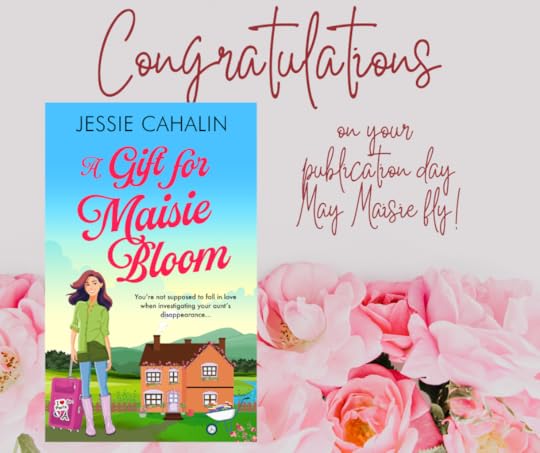
Here is my 5-star review of A Gift for Maisie Bloom:
“A mystery treasure hunt that takes us to romantic Paris”
I enjoyed this fun, mystery-romance, starring a likeable and identifiable Yorkshire lass: Maisie Bloom. At the start of the story, our Maisie is mourning the disappearance of her lovely Aunt Ada who has bequeathed her a chocolate-box cottage in a picturesque village.
But is her aunt really dead?
A series of clues and red herrings in blogs that are sent to Maisie, supposedly from her aunt, lead us through the narrative and as delightful as the Yorkshire countryside is, I was pleased to be lured to Paris to see Maisie solve this delightful “treasure hunt”. The Parisian section is my favourite and where it really comes alive.
There is romance a-plenty for the reader in the form of two young men. Who will win the day? Will it be Felix (“As always he’d been ironed from head to toe”) or Danny (“calm, business like”)?
I particularly loved Maisie’s personality: no-nonsense but wanting nonsense, a little clumsy like Bridget Jones, “always the last one to be picked for netball at school”, not very good at receiving compliments, embarrassed, unaware of her beauty, a thoroughly caring young woman. A heroine you want to win through.
The story has a Quality Street assortment of characters, all of whom are great fun: Camelia, (possibly named after a plant used to make tea!), Grant, her adorable friend who was gifted a Savoy cabbage by his new boyfriend and is highly offended until Maisie kindly explains it might be an invitation to spend time with him at the same-named swish hotel!!!
The author had me chuckling but at the same time there are plenty of pearls of wisdom scattered throughout. I highlighted several: “We often forget that the people in our lives were young once.”; “Parisiennes wear their confidence like a cloak…”
Maisie is an aspiring author and part of the book holds precious advice: like a letter to another author searching for his or her way through the publishing world. She wants to “…let my fingers feel for the words”. She finds advice in a note from her aunt: “You are about to feel the pain of the writing journey and maybe suffer the slings and arrows of readers comments. You will need to develop a tough outer shell: “Follow your own dreams … always look around you and don’t miss the obvious details in life.”
Wise counsel indeed. Jessie Cahalin has written her “own” book and has certainly given us plenty of delicious detail in her first Maisie novel. More please!
April 7, 2025
An ideal writing day …
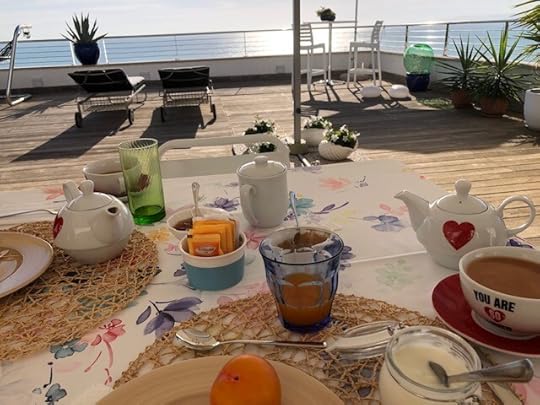
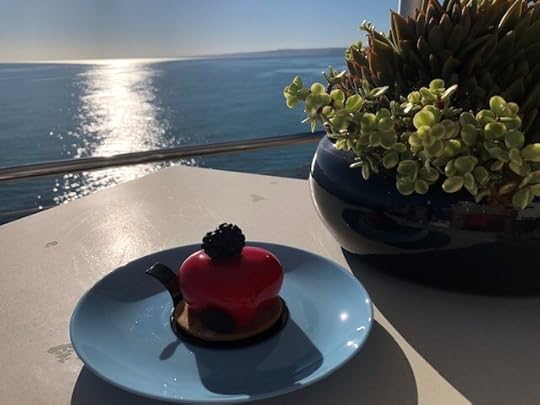
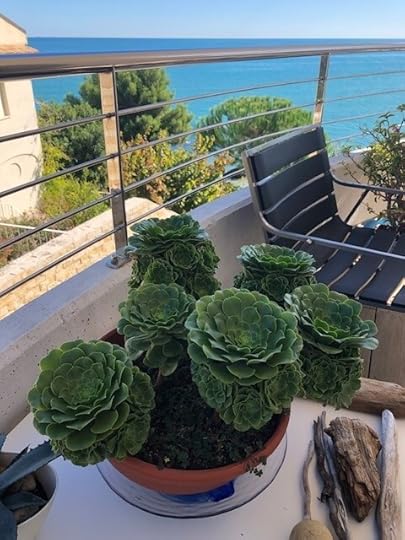

Of course it’s never like that! And especially when I’m besieged by structural edits.
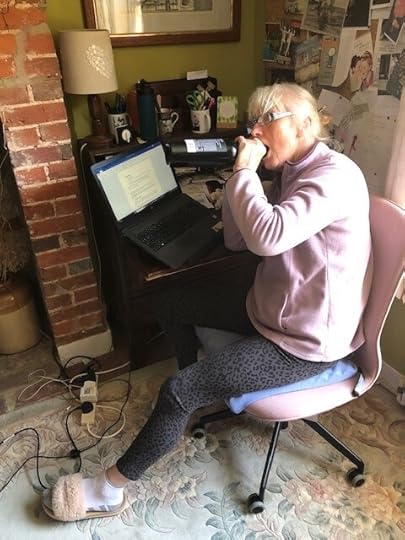
Driven to drink by the structural edits
When you write THE END at the end of your first draft, it is definitely not the end. It’s the beginning of the end of several rounds of edits…
Structural edits are the first process in reshaping first efforts. In my case, it usually consists of my lovely editor’s letter starting off with fulsome praise and compliments, followed by reality: substantial changes to be made… (sings to herself: “Things can only get better – la, la la etc”)
Typical recent writing day
Wake at five a.m. like a cartoon character: eyes on stalks, terror in heart. This book is rubbish, it’s full of holes, why did I include that chapter? It doesn’t go anywhere. Why is the villain a villain? I mean, I know why but will the reader? Why am I doing this to myself? Etc etc
I creep out of bed, careful not to wake hubby, tiptoe downstairs to switch on kettle, grab a couple of sheets of paper and the pen I prefer… where is the damn pen? Spend five minutes looking for it. Calm down as I write TO DO points. Lists are important for me to sort my thoughts…
Below are some tips I’ve learned for myself over the years to help me through this (always painful) stage. Firstly: compile and pin up a realistic timetable for completing the edits, allowing time for unforeseen eventualities (this time round for me: sickness and extra childminding requests)
I strongly advise keeping a chapter summary as soon as you start your novel (I use a spread sheet). A book takes months to write and it’s impossible to keep everything in your head. When you have to chop and change chapters/events at the structural edit change, this summary will become your best friend, believe me.Include in separate columns the timeline (dates, including season, weather), characters appearing where in each chapter, brief account of main event and word count. The latter helps show the overall shape of chapters.Note –there are apps available like Vellum, Ulysees and Scrivener that include the above methods, but my brain works well with paper and pen too and gives me a break from the screen. If you get in a real tangle, compile a large chat and use different colour ink to show the changes needed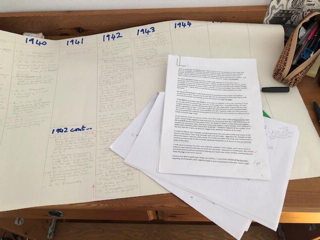
Use a timer to make sure you have breaks; go for walks. A tired brain creates tired stories. Be kind to yourself.

I’ll be talking to other authors in the next weeks and sharing their invaluable tips. But, remember, we all work in different ways. Above all, make sure to have fun. Life is too short for going spare over your edits. Ommmm!
See you on the other side xx
March 11, 2025
WRITING IS EDITING…
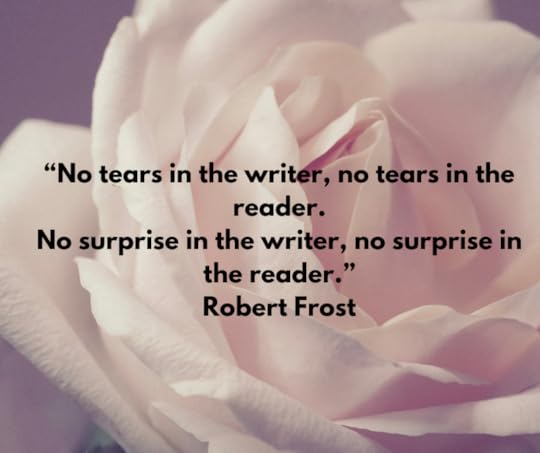
I heard that short, sharp sentence today on my writing retreat here in Spain: “Writing is editing”. We think we have written our books when we type The End. But it is only the beginning of a vital process of refining the content and organisation of our stories. I’m not talking simply about checking grammar and typos– although of course that is important too, but making absolutely sure that the overall quality of the work is the best it can possibly be.

I am very fortunate in that I work with an editor at Bookouture who has fresh ideas and a professional viewpoint but the first structural edits always send me into a spin. I need a couple of days to calm down, get perspective and understand what needs improving, cutting, reshaping. I have to be honest with myself.
I received these edits hours after arriving in a very wet Spain (It is our fault: why do we teach our children to chant, ‘Rain, rain, go to Spain’?)
Feeling quite despondent about the amount of changes advised: the characters to eliminate, the chapters which amounted to irrelevant sub-plots, the intensification needed for certain themes and the introduction of new action to strengthen the overall plot, I took myself off in a sulk for a damp walk through the olive grove. I don’t have to concur with everything, but I do need to listen to a sensible critique.

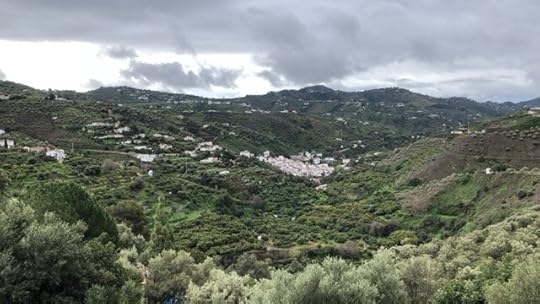
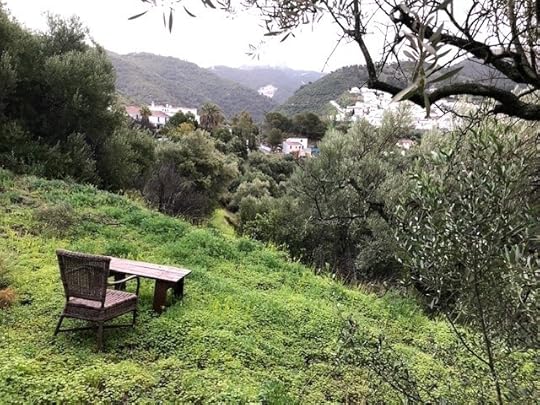

A walk through the wet olive grove in Andalucia. Orchids nod their heads as they push through the damp undergrowth. Look beyond the rain for the promises to come.
My walk was an allegory. As I tramped through the wet grasses and brushed against the olive branches dripping with diamond raindrops, I could see summer flowers waiting to burst forth. Just as the beautiful scenery here will benefit from the thirst quenching downpours, I hope the work I shall do in the next month on my book will also blossom and turn out more pleasing to all the senses. Wish me luck, friends!
And if you are tempted, here is the website for Rosanna Ley’s wonderful writing retreats that she holds here twice a year. Booking early is essential.

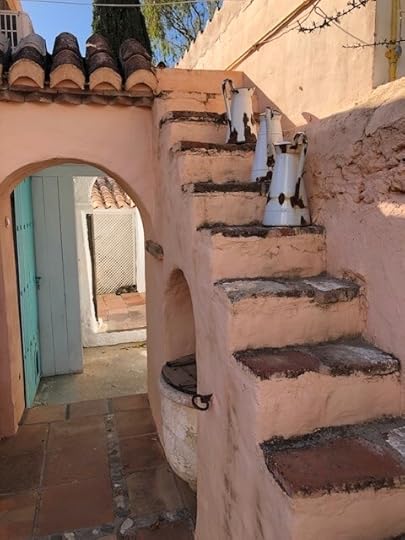
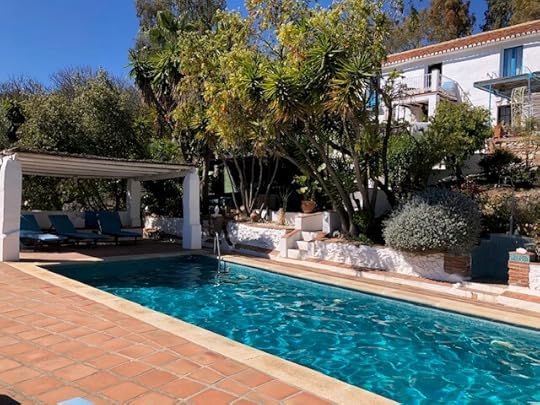
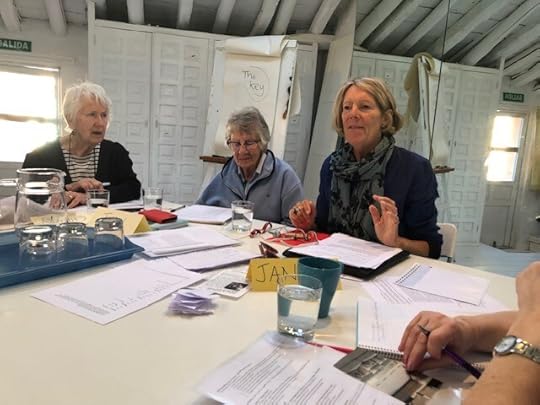
March 5, 2025
Escape through the pages
When I was compiling today’s blog, the weather was grey and dismal. I know when the world outside is uninviting, I escape through reading. And I like to travel in a book. Jessie Cahalin’s story invites us to romantic, mysterious Paris as well as the equally beautiful, but different county of Yorkshire.
Writers often draw on their own experiences when they create their stories and I was interested to learn from Jessie how she felt about Paris. I was lucky to read an early version of A gift for Maisie and this beautiful city certainly came over as alluring and charming on those pages. I can’t wait to read the finished story.
But over to the author herself to fill us in on the background to her latest book.

A Gift for Maisie Bloom is the story of a newly qualified teacher who becomes an accidental sleuth and falls in love. Maisie travels from Yorkshire and Paris to investigate her aunt’s disappearance.
Someone once told me that each time you visit Paris, you fall a little more in love with the city. Paris captured my heart from the very first visit back in 1994, and it was a joy to send Maisie there and re-live my first experience of the magic of Paris.
I was almost the same age as Maisie when I first visited Paris. The café culture was exciting, and I pressed my face up against the windows of the patisseries. Paris introduced me to my first sip of good quality coffee with all the nutty chocolate notes. And how could I not fall in love with a place that served hot chocolate and pain au chocolat for breakfast, in a bistro teeming with glamorous people I had only ever seen in French films?

I’m LOVING this photo of Jessie looking very “parisienne” and chic herself on an early visit to Paris in the nineties
When writing the scenes in Paris we were in lockdown, so I indulged in the memories and walked the streets via Google Maps. There was also amazing YouTube footage to enjoy and films such as Midnight in Paris, Forget Paris and French Kiss. I also read a wonderful memoir written by an Australian woman who moved to Paris. It is entitled Almost French: A New Life in Paris by Sarah Turnbull and it is now out of print. However, it gave an insight into the quirky culture of the sophisticated city.
When I visited back in the nineties, I had stepped into the city without any of those visual prompts and let my senses make sense of the place. My memories served me well when writing the book, and the scenes played out like those in a film.

Paris and investigation swept me away as much as it did Maisie. She goes to Montmartre, in Paris’s northern 18th arrondissement, known for its artistic history. She visits Place du Tetre, Sacré Coeur and a vineyard in the city.
A Gift for Maisie Bloom is a romance with a twist of cosy mystery. I hope readers will enjoy being transported to Paris and Yorkshire in the pages of the novel.
More about: Gift for Maisie Bloom
You’re not supposed to fall in love when investigating your aunt’s disappearance.
When Maisie Bloom inherits her aunt’s cottage in Yorkshire, life is perfect, including her two love interests. But when mysterious mail and blog posts arrive, she discovers Aunt Ada was investigating the disappearance of a prolific author in Paris. Was it murder? Soon Maisie is hot on the trail.
But can you sleuth in Paris without falling in love?
Early reviews:
‘This wonderful mystery is a gift for readers who enjoy cozy crime, intrigue and romance. Loved Maisie and I want to solve more mysteries with her. More Please!’
Lizzie Lamb – RNA Indie Author Champion
‘Refreshingly different! Laugh-out-loud humour laced with whimsy, eccentric characters and delightful glimpses of the Yorkshire countryside and romantic Paris. Will Maisie find what she is searching for? I so enjoyed the journey. I love the pearls of wisdom sprinkled in this lovely story.’
Angela Petch – Bestselling author
Maisie is quite a unique character- a fascinating blend of innocence, creativity, joy, even zaniness. Loved her in this book and looking forward to seeing how her life and world evolve in future books. Congratulations! Readers are going to fall in love with Maisie. There are many other delightful characters, too. And we all love to read about small villages in Yorkshire!
Jena Henry – Award winning US podcaster and reviewer
A Gift for Maisie Bloom is all things delicious… Not one but two handsome heroes present themselves for your (and the heroine’s) approval. I defy you not to laugh out loud at the antics of the nosy neighbours. Do you like a glamorous background? Take a trip to Paris with Maisie in search of her errant aunt, dead – or not? – in a tragic accident while pursuing a mystery of her own.
P. Stoner – Author and journalist
‘It’s a gorgeous cosy mystery mashed up with romance and is all about books, love and family, starting in a Yorkshire village and then whisking you off to Paris. Full of humour, twists and turns, it’s a fab book to cosy up with.’
Kitty Wilson – Bestselling romance author
About Jessie:
Jessie is a Yorkshire author living in Wales, UK. Wales and words have a special place in her heart, and she wants everyone to meet the characters who’ve been hassling her for years. Penning women’s fiction is Jessie’s dream job, but she also enjoys writing travel articles and features for her blog. Besides writing, Jessie adores walking, talking, cooking and procrastinating. Oh, and she believes you can never have too many notebooks.
Website: https://jessiecahalin.com/
Twitter/X: https://twitter.com/@BooksInHandbag
Instagram: https://www.instagram.com/jessiecahalinwrites
Facebook: https://www.facebook.com/JessieCahalinAuthor/
Book Links
Kobo
https://www.kobo.com/gb/en/ebook/a-gift-for-maisie-bloom
Apple
Google Play
https://play.google.com/store/books/details?id=t9w7EQAAQBAJ&pli=1Thanks so much, Jessie. I really enjoyed our chat and I wish you all the very best with your new book.

And you haven’t aged at all!
January 7, 2025
What’s in a reel?
We returned to England from Italy by car on Saturday 4th and two hours later, I had to take my lovely husband to A & E when he said, “Something’s not right; I can’t remember stuff.” He knew who I was and I recognised what might be happening. A few years ago I had experienced a frightening bout of transient global amnesia myself and so a quick turn around, with all our suitcases and boxes scattered about the living room, I took him to hospital. It was a very traumatic experience and, basically, he will likely never remember about eleven hours of his life. But he has not had a stroke and his heart is in good health, thank goodness. Now, I am in bed, pulling out of what has been a horrid couple of days suffering from flu. Feeling delicate, we flopped on the sofa last night by the stove and switched on the first two episodes of a #ww2 drama: Rogue Heroes
I sat further forward as an important scene from my own book, The Sicilian Secret, reeled out before me.
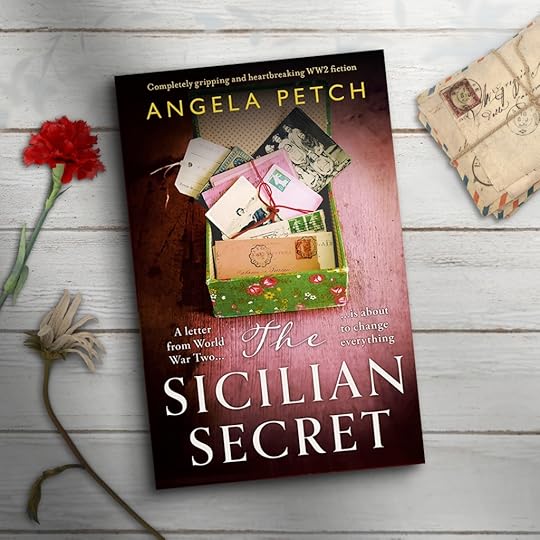
Chapter 24 of my Sicilian book describes the landings on the south eastern coast of the island: Capo Murro di Porco (the Pig’s Snout). It is a stone’s throw from where I lived and worked in my early twenties. And I visited it again in 2023 and mention it in my author’s notes at the back of my book.

This came up on the screen: the spot where I had lived in the 1970s and where the allies landed for Operation Husky
Here is a section from my author’s notes: “ … special thanks must go to Giovanni Abela and our serendipitous meeting. In May 2023my husband and I revisited Sicily specifically to research Operation HuskyA security guar.d turned us and Giovanni away from the landing sites. I speak fluent Italian and I was moaning to Giovanni, who turned out to be a keen, amateur historian of that very period. He showed me books he had in in his car boot and then, when the guard had disappeared, sneaked us down a footpath to explore the ruined barracks and battery positions. To be able to see the inscriptions on the walls, still intact and relatively unspoiled after eighty years, to stand on those cliffs battered by the winds and waves and imagine what happened on that night, was gold dust…Anything that can help an author step into a scene, also helps the reader.”
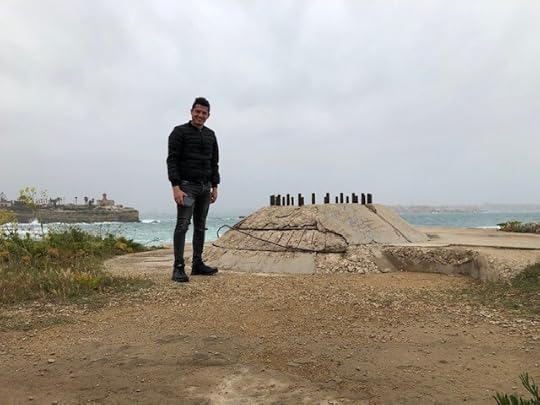
Giovanni at the landing point standing by a gun emplacement
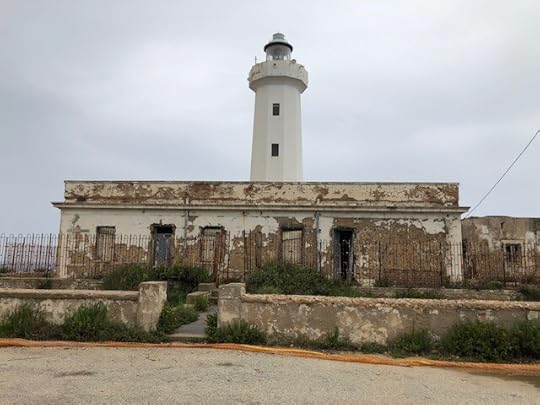
The lighthouse at Capo Murro di Porco
I’m not sure where that BBC scene was actually filmed – the coastline looked different and buildings were not what I had snooped in, but it was thrilling to watch the events unfold. Tragic too. When I had visited the Commonwwalth War Graves cemetery in Syracuse, I’d discovered there had been two hundred and fifty fatalities when the gliders missed their landing marks. Paddy Mayne ordered his men to avoid rescuing them from drowning in the sea, to concentrate on the task ahead. I included this in my book too, but Paddy Mayne is not Irish in my version, but a Scot and named Hamish Moyes. Such is the power of the sword when a writer thinks “what if?” and wants to circumvent legalities.
There is a very poignant scene in the second film instalment where one of the SRS men (Special Raiding Squadron) asks to confess to (a rather dodgy) priest. He was haunted at not having reached out to save one of the glider pilots clinging on to the landing craft. Another soldier cut him loose. The confession aspect reminded me of something that my own father had told me. He too was in Italy during the war. A convert to Roman Catholicism, he told me that he’d found confession very helpful during the traumatic times of war. A comfort.
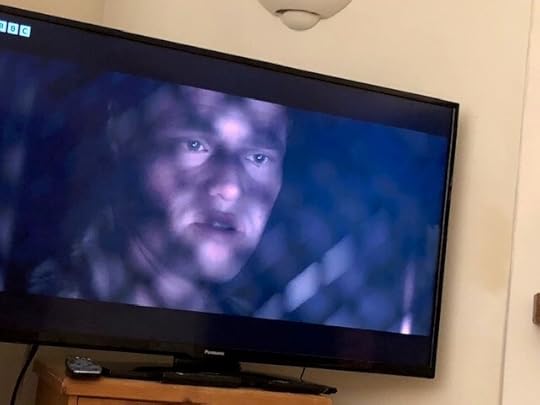
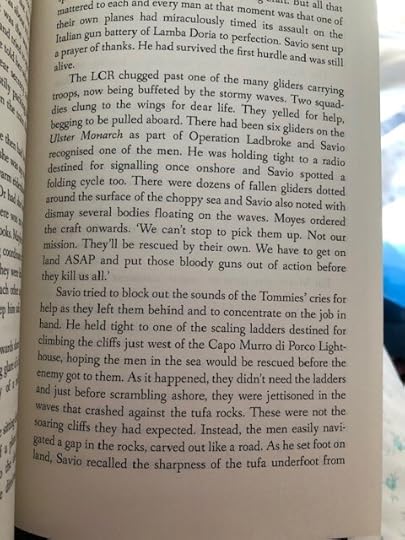
My account of the landings and horrific glider accidents
When I write my #historical fiction, I am trying to impart pieces of social history. My books are not history lessons (an equivalent phrase is written at the start of the episodes of Rogue Heroes by the way). I include facts but I want to explore lives, the effects of war, the events that fairly ordinary people live through. Mind you, the SRS – formed from the original SAS were not really ordinary. They were zany, rebellious anarchic, slightly crazy and I love the anachronistic rock music played in the background of these episodes during the madder, more tumultuous scenes.
I have obviously read Ben McIntyre’s wonderful book on which the episodes are based and I recommend it but my own book departs from the rest of the account of the invasion of Sicily because my character,Savio,goes into hiding. But what happens after then, I won’t divulge. If you like, you can read about it in The Sicilian Secret.
I’m looking forward to watching the remaining episodes and being transported back to my beloved Sicily, where I met my husband more than forty seven years ago. I never dreamt back then that I would write a novel set in beautiful Sicily. But #dreamscome true.
In the next days I have to put finishing touches to Book 8 before I submit to my lovely editor at Bookouture
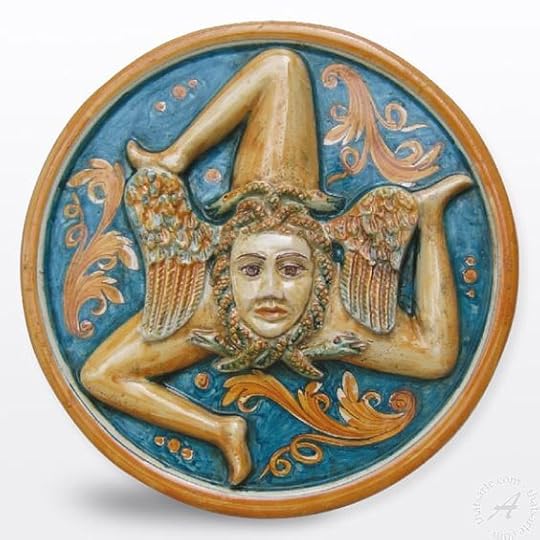
January 1, 2025
Auld acquaintance …
It’s late on the first day of a new year but hopefully not too late to wish all my friends a peaceful, healthy and successful 2025. Last year we were in New Zealand and this year we saw in the new year here in Tuscany.
Tomorrow we set off back to England after having extended our usual stay at our home here in Tuscany. The refrain of “auld acquaintance” reminded me I hadn’t touched my blog for a couple of months. And so, here I am again. Resolutions! Maybe this will be one. Do you make them? And break them?

Our Christmas here was pretty idyllic. Snow fell early in the morning of the 23rd just in time to greet three of our grandchildren who had come over to share it with us, along with their parents and aunt (another of our daughters) and uncle. We walked along the mountain peak to a hermitage on Christmas Eve, the only prints before ours of animals and birds, the snow crisp and fresh, diamond-glinting in the bright sunshine.

We climbed to just below 1,000 metres and stopped at the hermitage of Cerbaiolo where the resident priest, Padre Claudio, plied us with hot coffee, cakes and completed our break by giving us a Christmas blessing
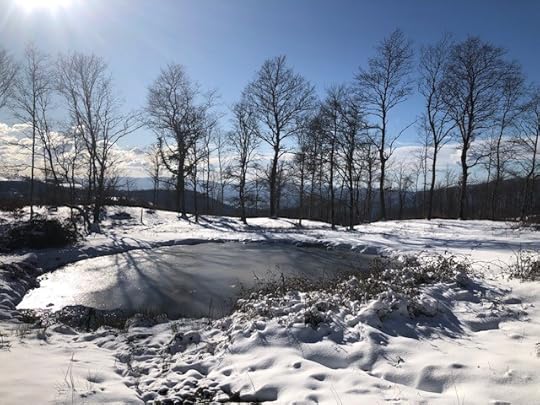
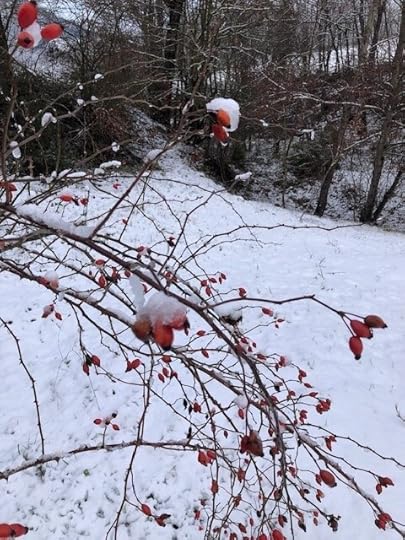

Snowball fights, taking turns to ride on the sledge, rolling over and over in the drifts… it was such fun to see children being children. We made snowmen (with rather rude appendages) and drank hot chocolate, topped with melting marshmallows on our return to our river home. And as the kitchen traditions are different from ours (and rightly so – and we savoured a good few of them: the usual panettone, panforte, cappelletti in brodo, chestnuts and a hard nougat called Torrone – ouch, my fillings…), I had to hunt down a turkey for lunch on the 25th as this is not eaten here. We successfully tracked one down in time. It was good for us to celebrate the Christmas season somewhere else. It’s so easy to become stale.
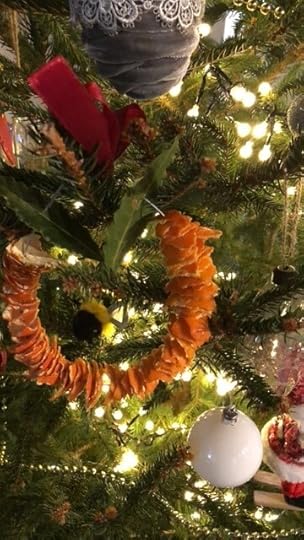
My decorations are back in England, so we made a few instead: garlands from citrus peel and bay leaves. iced ginger biscuits and dried apple rings. Earlier in December we had made an impromptu visit to Rome, to visit the shop of a lovely Italian friend, with the excuse of buying some gifts but really to totally surprise her. The velvet “pine-cone” on the tree above was from her shelves. If you ever go to Rome, visit La bottega dei Petali in Piazza Mattei to see Silvia’s enchantingly tiny shop. She makes many items from petals and leaves of flowers that grow in the meadows up here in the Apennines. If you are on Instagram, her address is @labottegadeipetali. Take a look.
It’s late and we leave very early next morning, driving back over three days on account of the winter weather. But I wanted to wish you all the best and start the new year off afresh. I have the delicious task of completing a first draft of a new novel by February 13th on my return to England and I want to explore new ideas too for future writing. New year, new start. Let the tingle and excitement continue.



